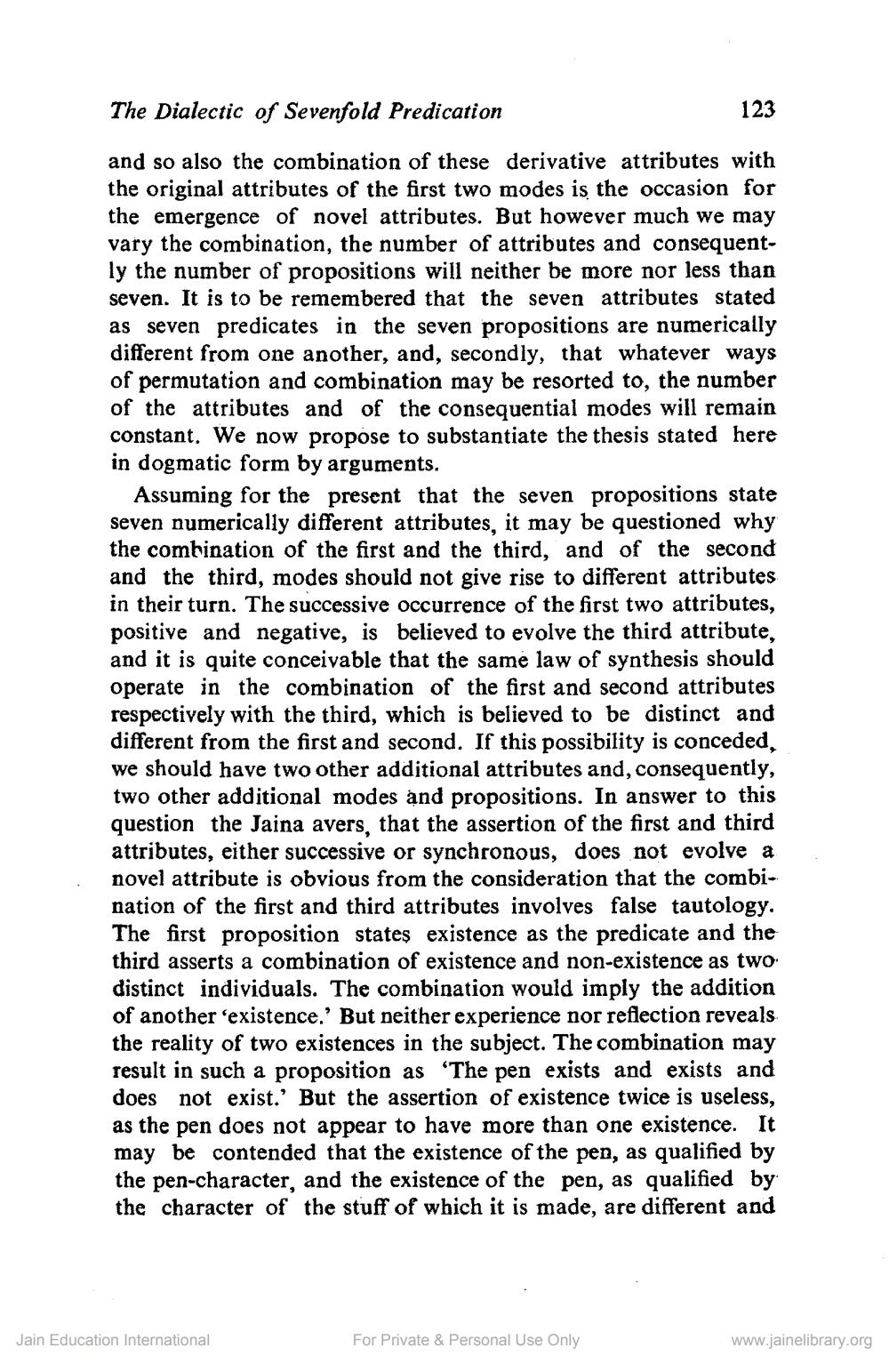________________
The Dialectic of Sevenfold Predication
123
and so also the combination of these derivative attributes with the original attributes of the first two modes is the occasion for the emergence of novel attributes. But however much we may vary the combination, the number of attributes and consequently the number of propositions will neither be more nor less than seven. It is to be remembered that the seven attributes stated as seven predicates in the seven propositions are numerically different from one another, and, secondly, that whatever ways of permutation and combination may be resorted to, the number of the attributes and of the consequential modes will remain constant. We now propose to substantiate the thesis stated here in dogmatic form by arguments.
Assuming for the present that the seven propositions state seven numerically different attributes, it may be questioned why the combination of the first and the third, and of the second and the third, modes should not give rise to different attributes in their turn. The successive occurrence of the first two attributes, positive and negative, is believed to evolve the third attribute, and it is quite conceivable that the same law of synthesis should operate in the combination of the first and second attributes respectively with the third, which is believed to be distinct and different from the first and second. If this possibility is conceded, we should have two other additional attributes and, consequently, two other additional modes and propositions. In answer to this
estion the Jaina avers that the assertion of the first and third attributes, either successive or synchronous, does not evolve a novel attribute is obvious from the consideration that the combination of the first and third attributes involves false tautology The first proposition states existence as the predicate and the third asserts a combination of existence and non-existence as two distinct individuals. The combination would imply the addition of another 'existence.' But neither experience nor reflection reveals the reality of two existences in the subject. The combination may result in such a proposition as 'The pen exists and exists and does not exist.' But the assertion of existence twice is useless, as the pen does not appear to have more than one existence. It may be contended that the existence of the pen, as qualified by the pen-character, and the existence of the pen, as qualified by the character of the stuff of which it is made, are different and
Jain Education International
For Private & Personal Use Only
www.jainelibrary.org




